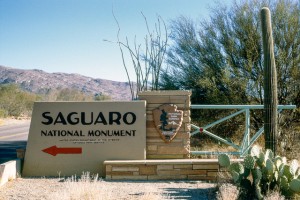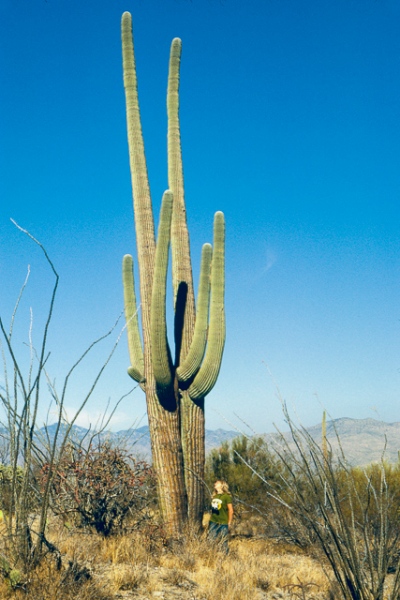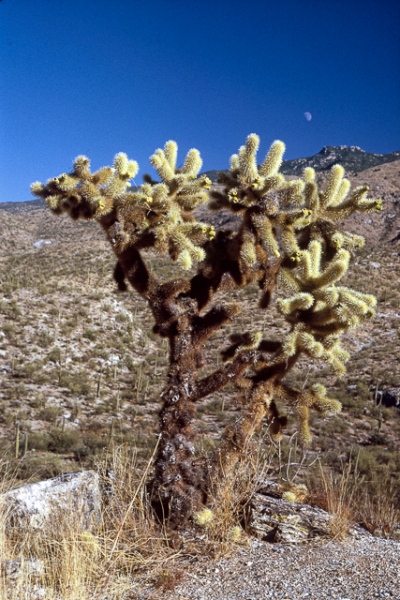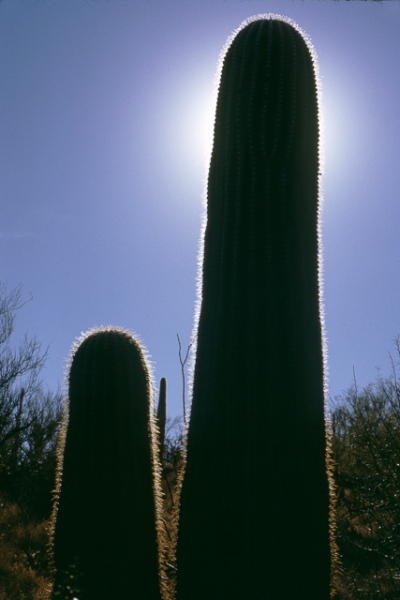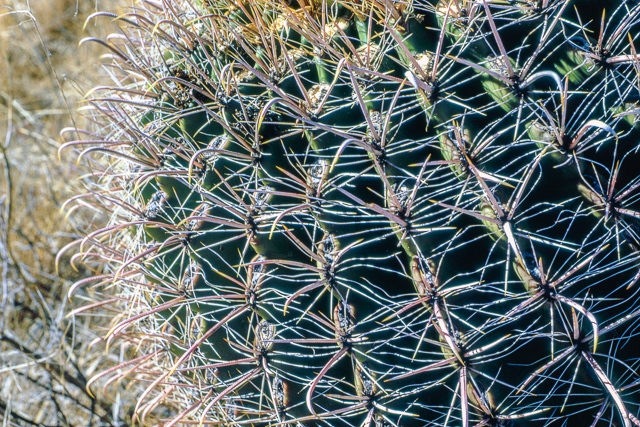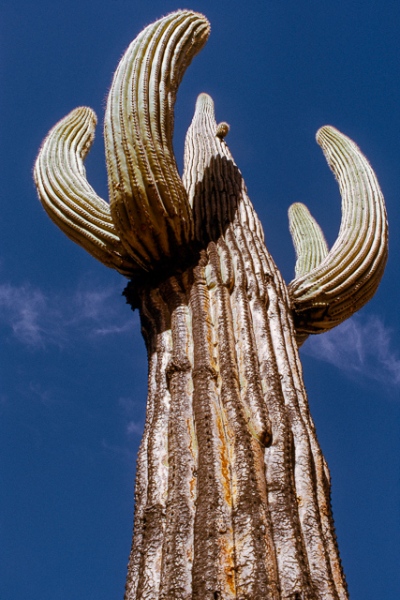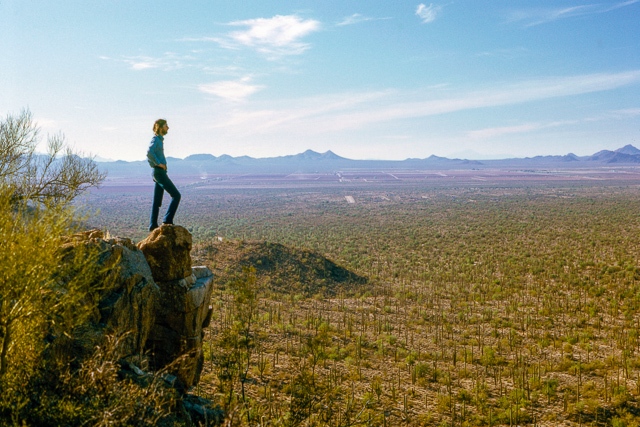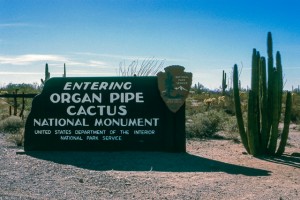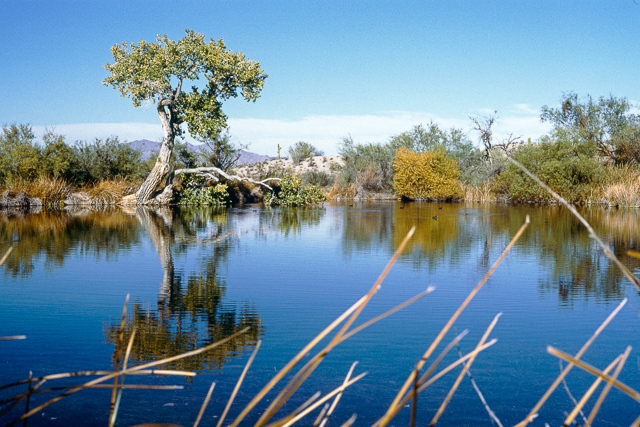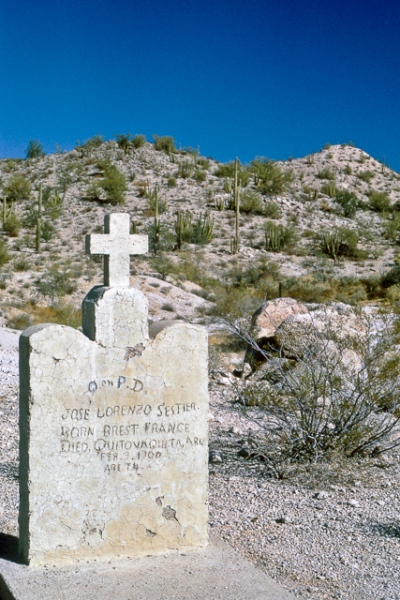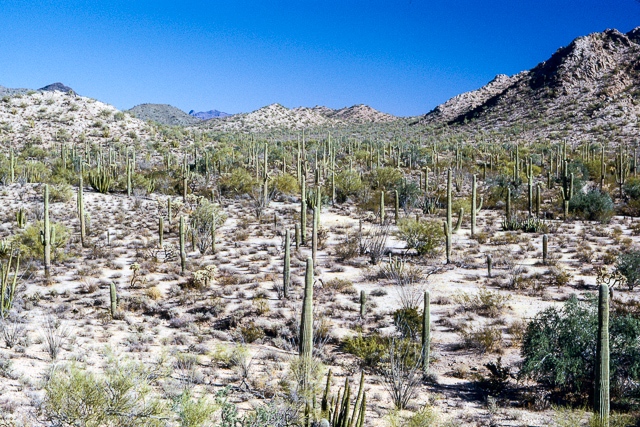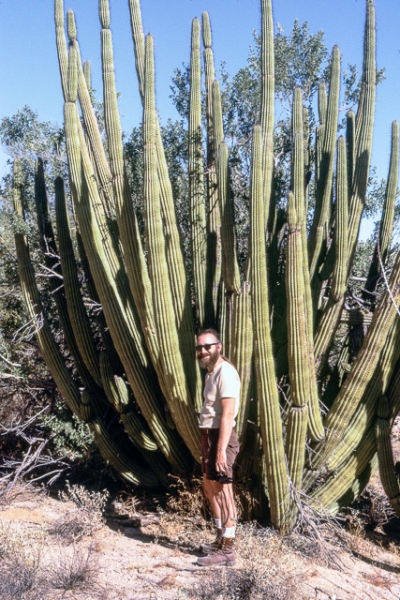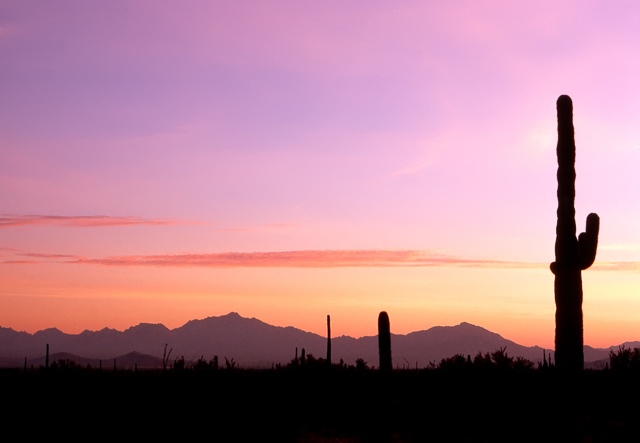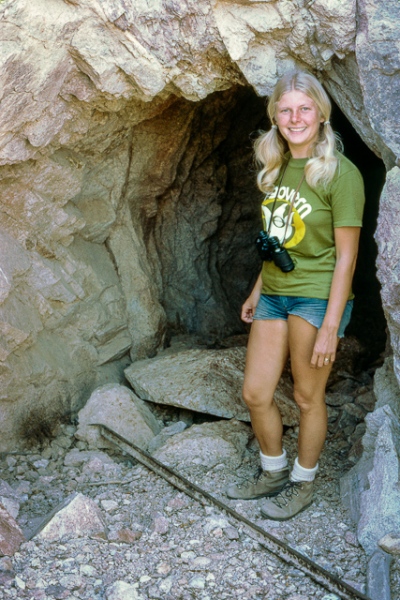The Trip – Part 9: Into the desert
After a great Thanksgiving in Los Alamos we made one more stop in the civilized world to visit a friend of Kathy’s in Albuquerque. Kathy Weinfurter and her husband were kind enough to put us up for a couple nights, take us out to dinner on the top of Sandia Peak, and generally make us feel warm and comfortable. Then, feeling well fed, well rested, and clean, we packed our bags and headed back out to continue our travels.
We headed west again, back to Arizona where we planned to visit the Sonoran Desert. Our first destination was Saguaro National Monument (now a National Park), which is located near Tucson. If you’ve seen any old western movies (maybe even new western movies) where the wagon trains or cowboys were heading across the desert you’ve probably seen a Saguaro Cactus. It seems to be the quintessential cactus with a tall central trunk surrounded with big curved arms reaching to the sky. I was amazed (and still am as I look back at some of these old photos) at how big these plants can get. It’s not unusual to see Saguaro that are 50 feet tall or taller. They don’t even start to grow branches until they’re at least 50 years old.
The Sonoran is not a desert full of sand dunes. In addition to the Saguaro there were many other plants like agave, barrel cactus, century plant, cholla cactus, hedgehog cactus, prickly pear cactus, desert broom, yucca, et cetera, et cetera, et cetera! The vegetation was more interesting than I had anticipated.
It was now early December. The daytime temperatures in the desert could easily reach 80 degrees at this time of year but as soon as the sun set the temperatures plummeted. Every evening the shorts and t-shirts were quickly traded for long-sleeves and sweatshirts. The night time skies were so clear and the stars so bright. It was easy to understand how people centuries ago could become so fascinated by the mysteries of the heavens. I had a star chart along and soon could identify more than just the Big Dipper. When the moon was full it was so bright at night that we could sit at the picnic table and play cards or dominoes without using a lantern. The card game of choice was usually cribbage and more often than not Kathy would win quite handily.
We eventually packed our bags and moved further west to Organ Pipe Cactus National Monument. As you can probably guess, the Organ Pipe Cactus has a bunch of vertical stems that apparently reminded some early settler (probably half crazed with thirst) of organ pipes. The weather continued to be beautiful — very warm and sunny during the day and very cool and starry at night.
One day we hiked off the established trails to look for an old mine that was marked on my topo map. We were warned to watch carefully for rattlesnakes and not put our hands or feet down anywhere without looking to see that it was clear. I was a bit intimidated by the warning at first but eventually got more comfortable hiking around. We found the old mine but didn’t go in because it didn’t look too safe. Fortunately we didn’t have any encounters with snakes. An animal that we were told could be even more dangerous is the javelina, which looks kind of like a wild pig and eats cactus. If I had to eat cactus I’d probably be mean and dangerous, too.
We met an interesting guy in the campground. His name was Paul Kay and he called himself an “aging hippie.” He was from Madison and was the astounding age of 40! He drove an old pickup truck and, for shelter, he’d built a small wooden camper in the back. It didn’t look much larger than an outhouse but it was fixed up nice and kept him warm and dry. He was traveling around with a cat named Nimbus — you can guess the color.
One day we went for a ride in Paul’s truck along a heavily rutted dirt road that followed the fence marking the border with Mexico. We were looking for an oasis called Quitobaquito Springs. We found it in what seemed like the middle of nowhere and we were the only ones there. The water looked cool and inviting. A grave nearby served as a grim reminder of the harsh conditions. As you can probably imagine, a dependable source of water in the desert is an important resource for travelers in the area. Quitobaquito served as such for native Americans as well as for Spanish settlers who traveled along a route they named “el Camino del Diablo” (the Devil’s Highway). I’d think a name like that wouldn’t attract many tourists.
I have one additional memory of our drive in search of Quitobaquito. The three of us were packed quite tightly in the old narrow truck and I was holding Nimbus. Every time Paul hit a big rut or swerved a bit in an attempt to miss an even bigger rut, Nimbus would hang on to me more tightly by employing his claws. By the end of that ride I felt like a human pin cushion. Aren’t cats wonderful?
[Note: While looking for links to include in this post I discovered that there are now additional problems to deal with in the park. According to an article in the March 12, 2012 Arizona Daily Star, “A tour of Quitobaquito Springs in Organ Pipe Cactus National Monument south of Ajo is unlike any other in the country. The tour to the scenic and historic section of the park is accompanied by armed security due to smuggling activity in the area. Tours require a reservation.” I guess a lonely spot along the Mexican border attracts a different kind of tourist today.]
The weather remained great but with Christmas approaching we soon had to decide where we wanted to go for the holidays.
